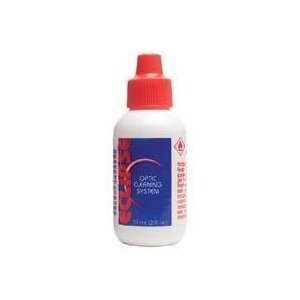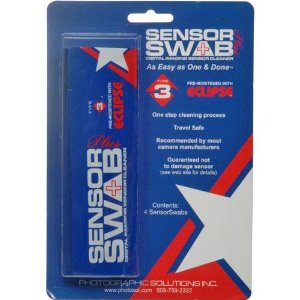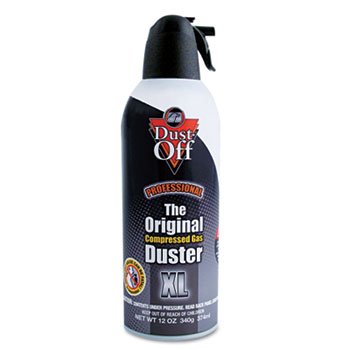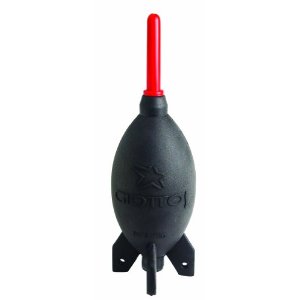There are many
stories about cleaning CMOS sensors on the internet. I have seen
movies where people clean their sensor in the outdoors working from the
back of a station wagon at the beach. I have seen people doing it
at home with clouds of dust.
To me, I wanted a
clean environment (not a station wagon at the beach) or an ill-kept
house. For me I wanted to clean the sensor with sterile products
and a clean environment. My wife is very particular about how she
keeps her house and there is very little dust. I chose the kitchen
table with lots of high-power lights above my head so I could see what I
am doing.
I purchased the
products below. The Eclipse evaporates completely and leaves no
film at all on the sensor.

The Sensor Swabs
are packaged in containers that keep them from getting dirty - they are
said to be prepared in very clean room.

The Dust-Off is
optional. There are people who don't like to use it because if
they tip the container they get the liquid coming out of the nozzle.
I have never had that happen.

The alternative
is the Giottos Rocket Air Blaster. It recycles air and sprays it
on the sensor with no liquid coming out of the nozzle.

First you have to
charge up your batteries so the
camera can keep the shutter open while you clean the sensor. Do
not fail to charge the batteries. You do not want your shutter to
close while you are cleaning the sensor.
Find your menu on
your camera that allows manual cleaning. The shutter opens and
stays open. Make sure you try it first to
see how it works so that you do not get the wrong setting.
Next you
put some Eclipse on the Sensor Swab and wipe
the sensor. It's very easy. If you purchase the
correct sensor swab it will clean the entire sensor with one swipe.
Finally you put
one of your lenses on f/22 and take some
pictures to see if you have gotten all the particles.
It's best to shoot the camera at something bright with no pattern so you
can see any remaining particles.
If you need to
clean the sensor again, DO NOT use the same
swab. You will have particles from the last cleaning
there and they could end up back on the sensor.
USE A NEW Sensor Swab.
You do not need
to wipe very hard. Read the instructions that come with the Sensor
Swabs - they suggest a careful pressure that slightly bends the stick
that the swab is on.
Visitors since
10/25/2010